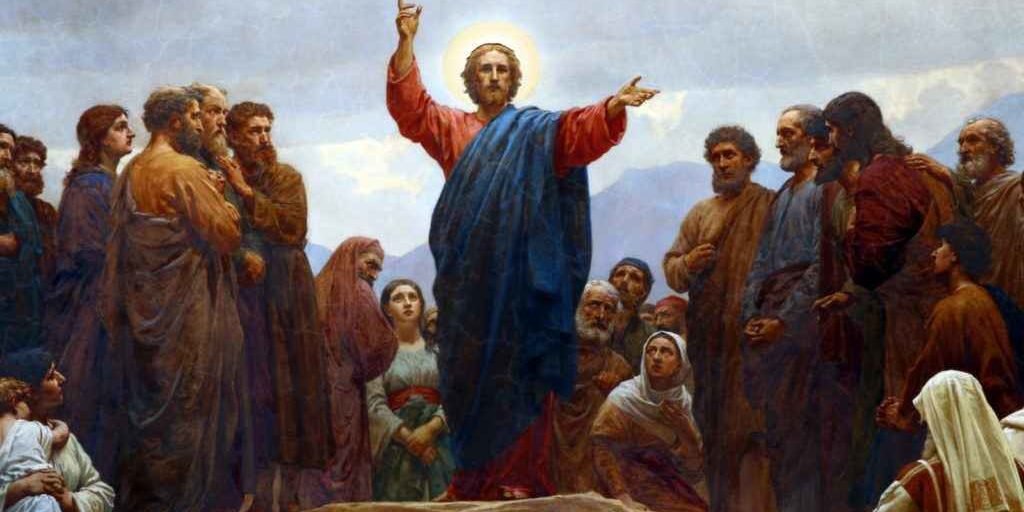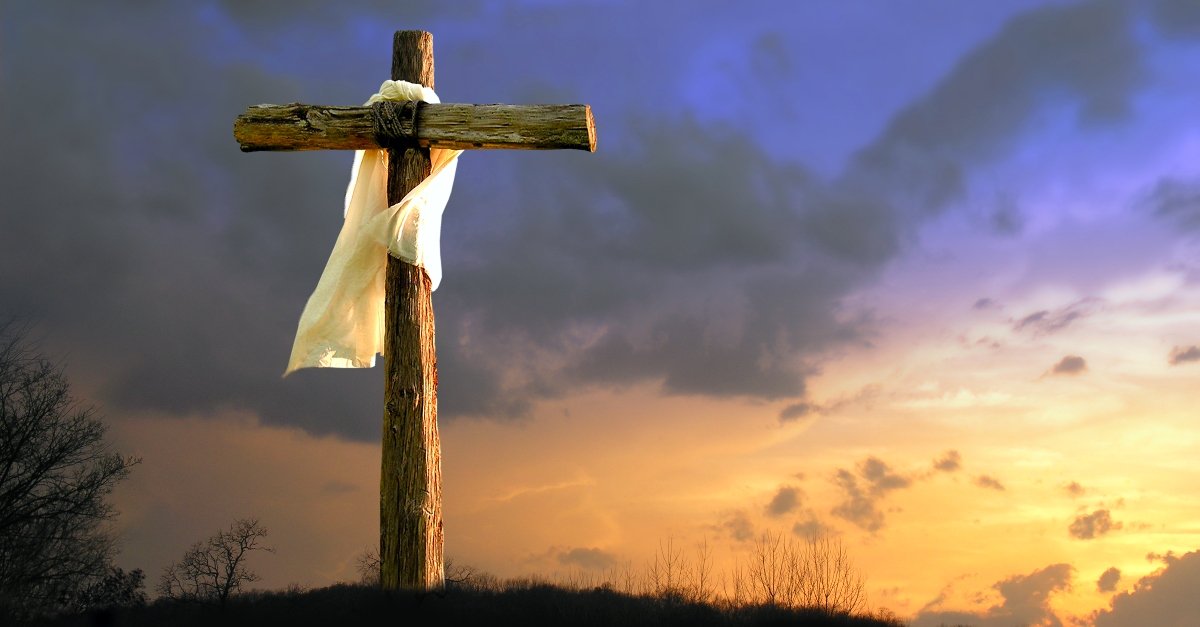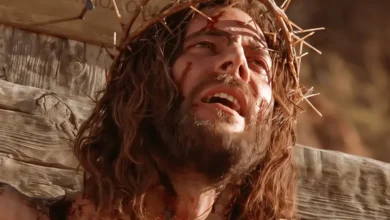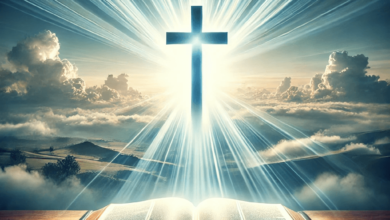
The divinity of Christ, images and images of God
Another important evidence of Christ’s divinity is the cases in which he attributes to himself the pictures and figures that were used specifically for God in the Old Testament and Judaism. What makes the action of Jesus more shocking is that he does not see any need to explain his work or defend it, rather he assumes it to be completely justified. These clear cases tell about Jesus’ attitude towards himself.
Although in doing this, he does not directly claim to be God, but by putting himself in the place of God, he indirectly considers himself to be one with God, or at least sees himself as having the same position and function as God. .
Some of these are found in the parables of Jesus. Parables are particularly important in several ways. One is that they contain a large part of the teachings of Jesus and they are especially important to everyone, both Bible scholars and ordinary people. Second, there is a high agreement among researchers regarding their historical reliability. Thirdly, they have a strong Christian dimension. In them, Abbasi encourages his listeners to make choices and decisions about him and his mission. In this regard, the parables of Jesus are unique. No other rabbi has depicted himself in his parables.

And finally, another interesting and important point is that Jesus uses images used for God in the Old Testament to introduce himself in motels.
One of these images is Barzegar, the Old Testament and religious writings often directly or indirectly depict God in his saving action, as someone who sows seeds or plants a tree. have depicted For example, in Jeremiah 27:31-31, describing the revival of God’s people and the new work that God will do in their lives, we read: “God says that the days will come when he will divide the house of Israel and the house of Judah into the seed of man and the seed of beast.” I will plant 000 The days are coming when I will make a new covenant with the house of Israel and Judah. And in the continuation of the same article, he says that I will make an eternal covenant with them, 000 and put my fear in their hearts so that they will not avoid me… and I will plant them in this land with all my heart and soul (32:40) -41). We also read in Hosea that God says in the description of the new inspection that he will make of his people: “I will plant him in the earth for myself” (2:21 see also: Isaiah 61:11; Ezekiel 8:36- 9; Exodus 17:10; Isaiah 61:3; 2 Samuel 6:7.
Jesus talks about the thresher in his four parables: the parable of the thresher (Matthew 3:13-8); Like an egg that grows in secret (Mark 26:4-29), like a mustard seed (Matthew 31:13-32; and like a poisonous weed (Matthew 24013-30).
The divinity of Christ, images and images of God
In all these parables, planting the seed refers to announcing the message of the Kingdom of God in the preaching and teachings of Jesus, and generally to the beginning and establishment of the Kingdom of God in the teachings and services of Jesus. Therefore, in the first place, Barzegar is none other than Jesus himself in carrying out the mission of announcing and establishing the kingdom of God. Another image that is used for God in the Old Testament and Judaism and Jesus uses it for himself is shepherd.
God is depicted as a shepherd in many parts of the Old Testament Genesis 24:49; Psalm 23 9:28; 1:80; Isaiah 11:40; Jeremiah 31:31 23:3; Ezekiel 10:22-34; Zechariah 16:9, 7:11-10). In one of the most fascinating and detailed of these passages, Ezekiel 34, which specifically inspired Jesus in his redemptive mission, God is depicted as a shepherd searching for his lost sheep.
Jesus used the image of the shepherd in his two parables: the parable of the lost sheep (Luke 4:15-7) and the good shepherd (John 1:10-13). Although Jesus did not explicitly identify himself as a shepherd in the Lost Sheep Motel, the background and framework of the parable indicates this. In Luke 15, Jesus brings this parable to the Pharisees who objected to him accepting tax collectors and sinners.
In addition, in another place, he clearly declares by quoting Ezekiel 16:34 that he has come to seek and save the lost (Luke 10:19) and in another place, referring to the same passage, he says that for the sheep The lost of Israel has come (Matthew 24:15).
In addition, in John 10, he clearly declares that he is a good shepherd and compares himself to the religious leaders of God, as stated in Ezekiel 34 and Zechariah 11. He is the good shepherd who came so that the sheep can find life and benefit from it abundantly, while they are nothing more than mercenaries who have come to steal, kill and destroy the flock.

He attributes to himself what was said about God in Ezekiel 34. He searches for the lost sheep and brings them back to the fold (Ezekiel 11:34-13, 16, 22); He takes them to the pasture and feeds them (Ezekiel 1334-31,15); protects them from the attack of predatory animals (15:34-22); And judging among the sheep, he separates the goats from the sheep (Ezekiel 17:34-22; Matthew 31:25-33).
The Pharisees criticized why he and his disciples did not fast. In response, Jesus portrays himself as the bridegroom and points out that the guests of the wedding party do not fast as long as the bridegroom is with them. In this way, Jesus compares the restoration of Israel and the renewal of the relationship with Jehovah in the kingdom of God, which began in his service, to a wedding feast where the disciples are the first guests. This is completely in line with the symbolism of the Old Testament, with the big difference that in the parable of Jesus himself he plays the role of the bridegroom. The second example is also very enlightening. This parable is also about the coming of the kingdom of God in the service of Jesus. This time, a king has arranged a wedding for his son. But the invitees have refused to attend the wedding with a thousand and one insulting excuses. So the king calls all the poor, the deprived and the outcasts to his son’s wedding. In this parable, although the son-in-law is not the king himself, he is his son! And finally, in the last parable, at least in the context of the Gospel of Matthew, the bridegroom refers to Christ himself in his appearance as the Son of Man. In addition to parables, in his other sayings, Jesus attributes the roles of God in Judaism to himself or uses parts of the Old Testament that are about God for himself. One of the shocking cases is related to the role of God as judge and his coming to judge the world, Jesus attributes this well-known and familiar role of God to himself in Mani 28019 and 31:25-46. In these words of Jesus, there is a familiar resonance from Zechariah 5:14, Daniel 907 and Joel 12-103. The only difference is that instead of God, it is Jesus who comes in glory with all his holy angels and sits on his glorious throne for judgment and all the nations appear before him for judgment. Finally, we mention a few cases in which Jesus uses verses from the Old Testament that are about God, without any explanation about himself. In Matthew 15:16-21, the chief priests and religious scholars objected to someone who allowed the children in the temple to shout in his praise: “Hosheanna, son of David.
Today in the article : The divinity of Christ, images and images of God We reviewed useful information about the Bible and the way of Jesus. If you wish, you can view other articles of Ali Vahidi about Christianity





